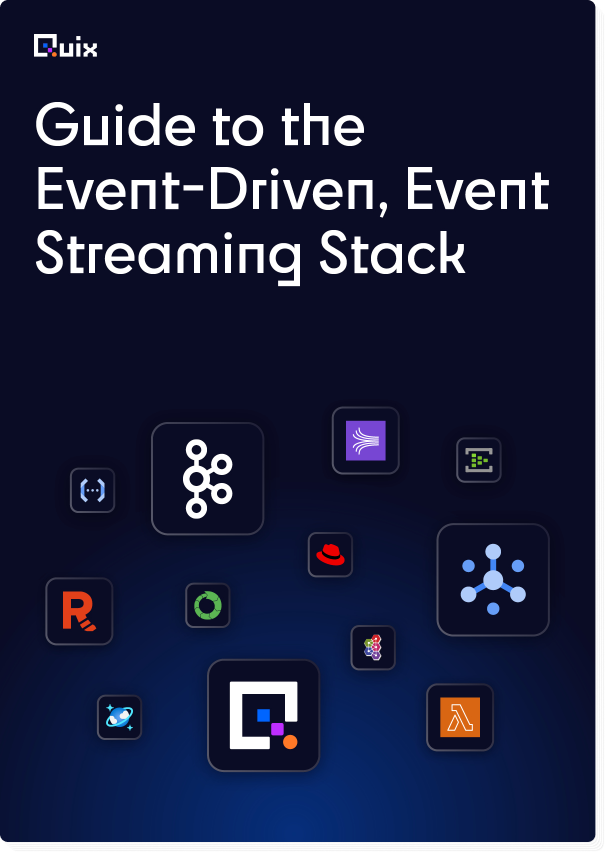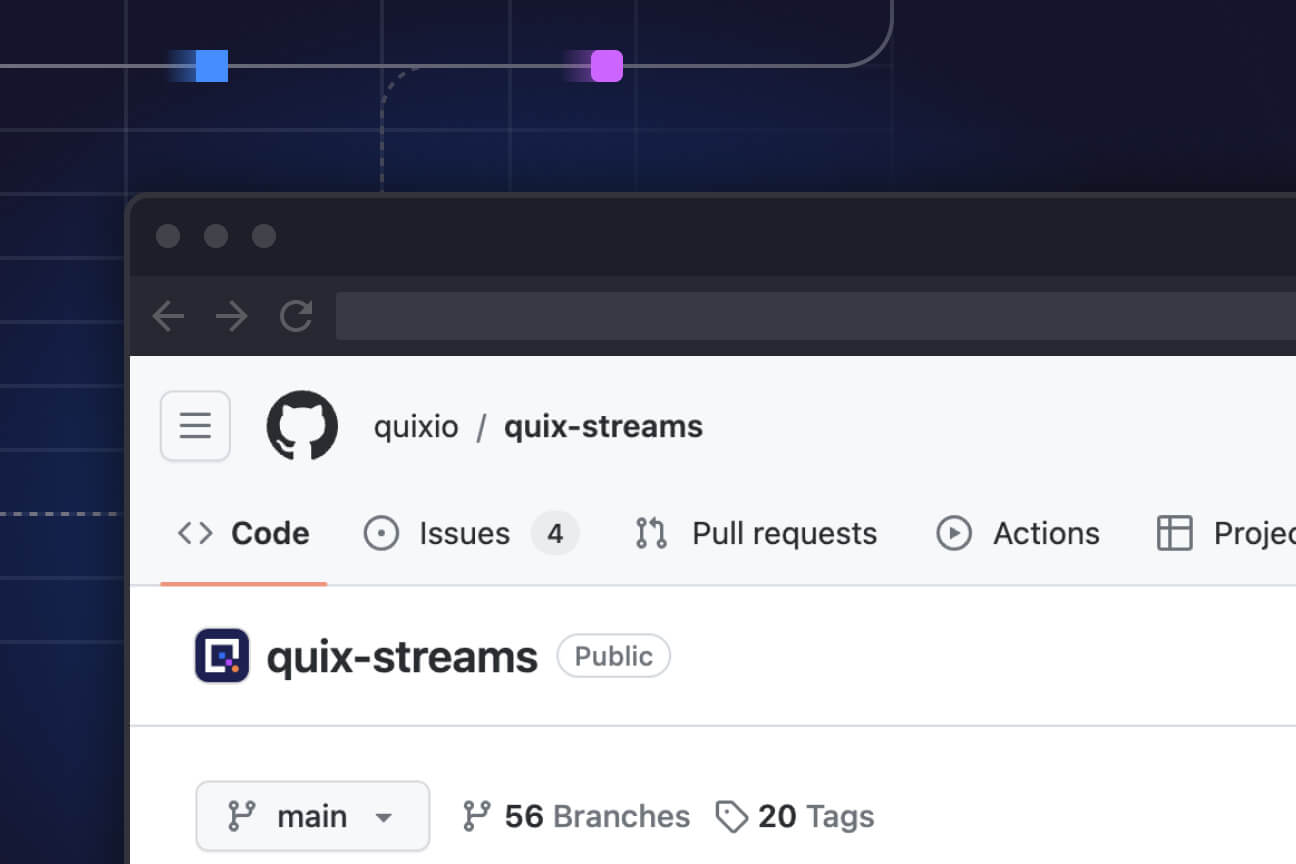The business value of usage-based pricing
Move over, subscription pricing. Usage-based pricing maximizes the value of a service for product-led growth, building trust and transparency in the process.

Alert: This post includes details about Quix that are no longer accurate. We have updated information here.
Maximize value and transparency with real-time, usage-based pricing
Usage-based pricing is going mainstream. Nearly half of all SaaS companies report using usage-based pricing — that’s a 200% growth in the past four years. And that number is expected to increase. According to the 2021 State of Usage-Based pricing survey, 79% of SaaS companies will likely rely on usage-based pricing in two years.
Quix is among those companies employing a usage-based pricing model to maximize the value our customers receive and to learn about how they’re using the Quix product.
We know it can be challenging to execute usage-based pricing, so we’re happy to share our implementation, experience, and results in this article.
What is usage-based pricing?
Usage-based pricing means customers pay for what they get — no more, no less. A company that uses usage-based pricing derives its revenue directly from how and to what extent its customers use its products or services.
Two primary types of usage-based pricing exist: subscription and consumption.
Usage-based subscription pricing
You’re probably pretty familiar with this model. Customers pay at regular intervals for specific products, features, and services with a subscription model. A customer might add an extra layer of security to a music subscription for $5 per month or $500 per year for heated seats in a vehicle they’re leasing. They’ll keep paying that price even if they never open that app or car door.
Usage-based consumption pricing
With usage-based consumption models, customers pay for their active use of the product or service. A database company might charge a fractional dollar for each byte of data written to a disk. Some new auto insurance companies charge by the mile driven. Other interesting examples include Rolls Royce, which for nearly 60 years has priced aircraft engine maintenance based on hours of flying time, and scooter companies like Voi, which base prices on time and distance. If executed correctly, consumption-based models create the most value for customers by letting them pay for the products and services that they use.
A few considerations: product and resources
Before executing usage-based pricing, companies should look at the structure of their products and their engineering resources. Products and services need to be divided into measurable components that are easy to understand. It’s also helpful to offer customers some educational materials that help them understand the purpose and value of each element.
Implementing and tracking usage-based consumption pricing can be a daunting prospect. Thankfully, the rapid adoption of smart technology enables companies to collect the data they need to adopt one of these pricing models and the tools they need to process that data. Quix can help, too.
Quix’s mix of subscription and consumption usage-based pricing
At Quix, we use a mix of subscription and consumption-based pricing models. Our monthly subscriptions give smaller customers peace of mind with “all-inclusive” packages, while our consumption-based model provides elastic pricing to larger customers with more variable demands for application infrastructure.
Consumption-based pricing is the jewel in the crown. To keep payment easy, customers purchase credits that can be spent on any Quix resource.
Here’s a sample breakdown of product resources, credit use, how those credits are measured per resource, and the period they’re tracked over.

You can see that the units for a workspace is a month. This is because the resource (a workspace) is likely durable — we don’t expect customers to create and destroy them frequently. However, if a customer had one workspace for one hour, we would calculate and charge for just the hour.
This is because, like CPU and memory, all resources are billed depending on precise actual consumption. From a business perspective, this approach ensures customers don’t simply sit on a service. They use everything that they pay for, no matter the quantity.
How we used stream processing to build our usage-based system
Built on Quix, our billing system uses a microservices approach that passes data down a pipeline of processing nodes. The data is kept in-memory so that we can process billions of micro-transactions while only using a minimal amount of compute resources.
This is a mission-critical system. We don’t want to miss any data, as it could lead to over- or under-charging. Fortunately, Quix guarantees uptime by replicating data delivery and processing across multiple clusters. It also handles self-healing and backups in case of problems.
This diagram offers an overview of the billing system’s architecture. If you want to dig into the details, you can find them in our blog post, “How to develop a usage-based pricing system.” For now, I’ll just hit the high points.

We start by gathering data, such as CPU usage and disk I/O, from the underlying Quix platform. Once that’s gathered, it’s sent over HTTP using the Streaming Writer API gateway. The data is collected in the smallest possible quantity for each resource (milliseconds, millicores and bytes), which provides a high level of accuracy. Once the data is collected, it runs through the stream processing pipeline. This part of the process groups the raw data according to customer accounts (our business context) and expresses it in the number of credits used by minute and hour.
Customers can see how much credit they’re using in real time on the Quix billing page. No need to wait to the end of a month to know how many credits you’re using.

The billing page uses the Streaming Reader Websocket API, which pushes data to JavaScript to keep up with the frequent updates. The client uses this API to read live data from the main pipeline and gives customers a real-time view of total spend and current consumption rate. This is one of the many benefits of choosing streaming data processing over batch processing.
This system regulates a set of powerful (yet unwieldy) tools that ultimately minimizes the number of people we need on our team, and the amount of time they need to spend learning how to use new products.
Read more about the time Quix saves us maintaining our billing system in our blog post, “How to develop a usage-based pricing system.”
Flexible, transparent pricing that leaves customers and companies happy
Both subscription and consumption models offer a host of benefits to all involved.
Subscription pricing is a straightforward system that lets customers feel in control of their spending, and it’s easy for companies to implement and communicate.
Consumption-based pricing is elastic and focused on value. It eliminates barriers to adoption and accommodates all levels of users. By removing the issue of a rigid price tag, people can experiment with a product or maintain light usage. And, because pricing scales predictably and transparently, it also fits the heaviest users. Customers are in control of their spending on an exceptionally granular level.
Providers also benefit from consumption-based models. Implementing the system helps you discover the usage patterns of your clients and implement dynamic pricing to ensure all components are as profitable as possible.
A tool like Quix can help your customers feel valued and in control of pricing while ensuring your team uses their time efficiently. If this sounds like a use case you’d like to explore, book a consultation with me or chat with me on our community Slack and let’s talk more.
What’s a Rich Text element?
The rich text element allows you to create and format headings, paragraphs, blockquotes, images, and video all in one place instead of having to add and format them individually. Just double-click and easily create content.
Static and dynamic content editing
A rich text element can be used with static or dynamic content. For static content, just drop it into any page and begin editing. For dynamic content, add a rich text field to any collection and then connect a rich text element to that field in the settings panel. Voila!
How to customize formatting for each rich text
Headings, paragraphs, blockquotes, figures, images, and figure captions can all be styled after a class is added to the rich text element using the "When inside of" nested selector system.

Check out the repo
Our Python client library is open source, and brings DataFrames and the Python ecosystem to stream processing.

Interested in Quix Cloud?
Take a look around and explore the features of our platform.

Interested in Quix Cloud?
Take a look around and explore the features of our platform.






